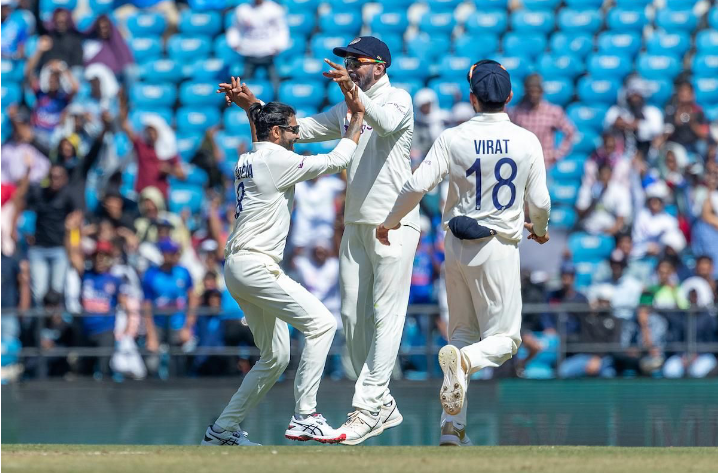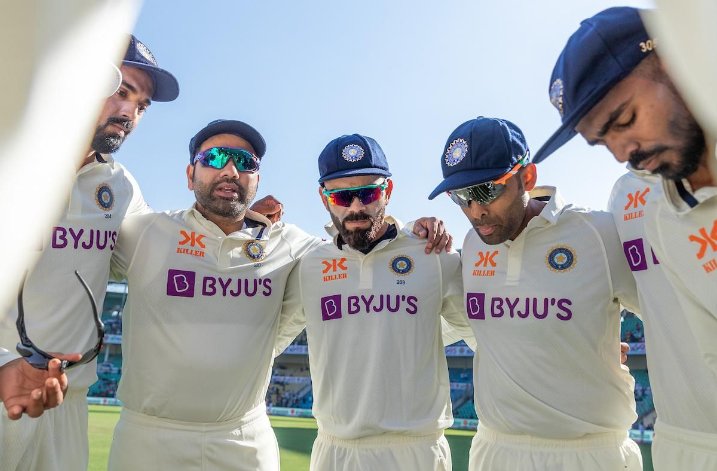
Team India cemented their dominance on the first day of the opening Test match against Australia by bundling out the Australian inning for a disappointing total of 177 runs on a challenging Nagpur pitch. In response, India reached a total of 77 for 1 at the time of stumps thanks to Rohit Sharma’s quickfire half-century in the second innings.
The first Test match between India and Australia is currently taking place in Nagpur, and the hosts are currently in control of the situation. While Mohammed Siraj and Mohammed Shami, two Indian fast bowlers, initially caused trouble with the new ball, the impact of spinners on Nagpur’s seemingly uneven surface dominated much of the conversation. Marnus Labuschagne scored 49, the highest individual mark among Australian hitters as Australia could only muster 177 on the board in the first inning.
India vs Australia Match Summary – Day 1
Australians chose to bat first in the match, but they quickly lost Usman Khawaja and David Warner to the persistent Indian pacers, handing them the early advantage. Australia kept their composure despite losing two cheap wickets thanks to Marnus Labuschagne and Steve Smith. They kept the Indian bowlers at check with a strong partnership, proving why there are two of Australia’s strongest batters in the longest format of the game at the time.
With Labuschagne approaching his first fifty on Indian soil, the pair made sure Australia made it to lunch without any more losses. However, after Ravindra Jadeja dismissed the top-ranked Test hitter with an incredible scorcher in the post-lunch session, the home team got their momentum back. The left-arm spinner bowled Matt Renshaw with the very next delivery, giving India the edge in the game.
The next batter to depart the pitch was Smith, who seemed to be in excellent form until Jadeja caught him up with his outstanding bowling. Australia’s middle-order took consecutive hits, leaving them in a precarious position with the score at 109/5. The visitors fought back, though, thanks to a counterattacking duo of Alex Carey and Peter Handscomb. Carey in particular appeared to be in excellent shape before Ravichandran Ashwin got the better of him in an attempted reverse sweep.
From there, things swiftly got worse as the visitors managed just 177 runs on the board before losing their final three wickets while adding only 15 runs to the total. After a protracted absence from international cricket, India’s Ravindra Jadeja quickly found his rhythm again, claiming his 11th five-wicket haul in the format.
How the results of the Border-Gavaskar Trophy will affect the World Test Championship final

In the Border-Gavaskar Trophy, Australia and India are both frontrunners to qualify for the World T20 final, which adds more fuel to the fire as there are scenarios that can end the hopes for one of the teams. The other two teams trying to proceed to the WTC Final are Sri Lanka and South Africa.
With a 75.56 winning percentage, Pat Cummins and crew presently lead the WTC points standings, ahead of India’s 58.93 percent. Rohit Sharma’s team has a chance to pass the Australians in the WTC points standings if they perform well in the Border-Gavaskar Trophy.
If India manages to win the series 4-0, Australia would drop to second place since their percentage would decrease to 59.65, jeopardizing their chances of making it to the championship game. In a two-match series against New Zealand, Sri Lanka, which is third in the WTC standings, will attempt to complete a clean sweep to move up to a second position with 61.11 points.
A 4-0 victory for India over Australia would increase their rating to 68.06 percent, while a 3-1 victory would take it to 62.5%. In both cases, India’s points would be sufficient for them to go to the championship game. If the series is tied 2-2, though, India would finish the WTC group stage with 56.94%, giving Sri Lanka more opportunities.
